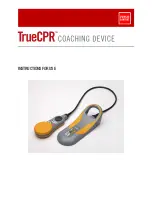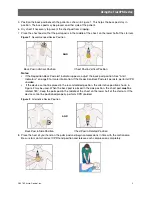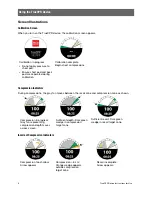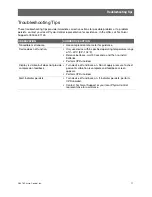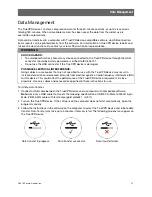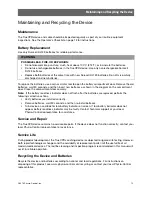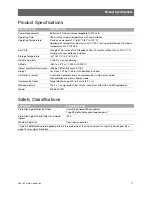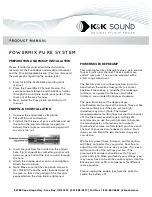
2
TrueCPR Device Instructions for Use
Safety Information
Safety Information
The following terms are used in these operating instructions:
Warning:
Hazards or unsafe practices that may result in serious personal injury or death.
Caution:
Hazards or unsafe practices that may result in minor personal injury, product damage, or
property damage.
IMPORTANT!
Check the battery readiness indicator regularly. If indicator is not flashing, replace
batteries immediately.
WARNINGS
POSSIBLE PATIENT INJURY:
•
The TrueCPR device is not intended for use on children or infants. Only use the device on patients
who are 8 years of age or older.
POSSIBLE INEFFECTIVE CPR:
•
After use, inspect device and cable for wear or damage. Remove from service if damaged.
•
Do not use the TrueCPR device over very large metal surfaces. Perform CPR unaided instead.*
•
The TrueCPR device may provide incorrect feedback if not positioned properly.
•
Check back pad and chest pad position after patient movement and during transport.
•
If patient is on a mattress, place a backboard beneath the patient according to standard
protocols. Then insert the device back pad between the patient and backboard.
•
If the device cannot be positioned correctly on the patient or fails to operate, remove the device
and perform CPR unaided.
POSSIBLE DEVICE FAILURE:
Do not modify the TrueCPR device.
POSSIBLE ELECTRICAL INTERFERENCE WITH DEVICE PERFORMANCE:
Equipment operating
in close proximity may emit strong electromagnetic or radio frequency interference (RFI), which could
affect the performance of this device. Avoid operating the device near cauterizers, diathermy
equipment, or other portable and mobile RF communications equipment. See “Separation Distances”
on page 21 for recommended distances of equipment. Contact Physio-Control Technical Support if
assistance is required.
POSSIBLE EXPLOSION HAZARD:
Do not use this device in the presence of flammable gases or
anesthetics.
* The TrueCPR device has been designed for use on hospital beds, stretchers, gurneys, and in
ambulances. The device is compatible with common patient-worn or implanted metal, such as jewelry,
ICDs, or pacemakers.

